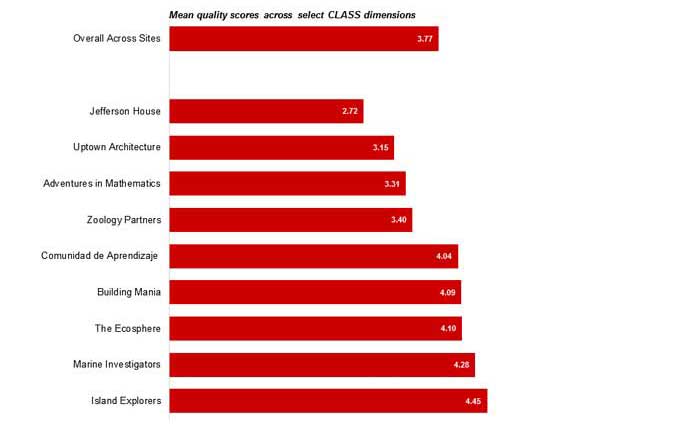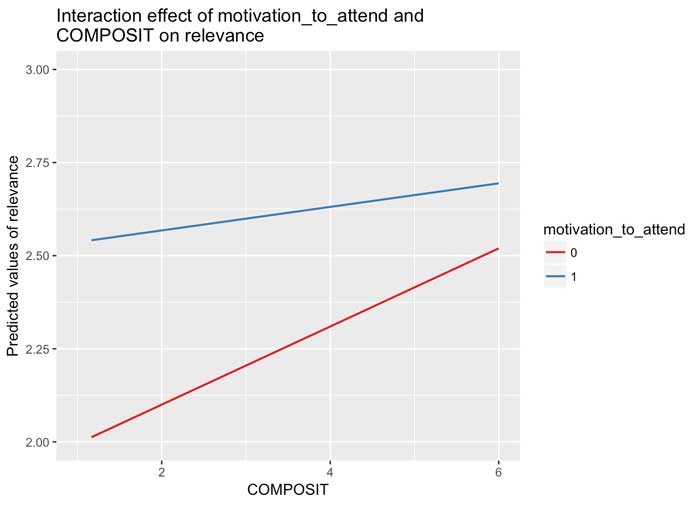- STEM IE
- Program Quality
- STEM IE Research Findings
STEM IE Research Findings
Findings from our research study, ideas about what Activity Leaders can do to enhance content quality to facilitate learning, and further resources for learning more about how to facilitate learning can be accessed by clicking on the links.
As shown in Figure 1, the programs enrolled in the STEM IE study varied in terms of how consistently they were found to deliver program quality based on
Figure 1. Programs varied in terms of program quality.
In the STEM IE Study, program quality was assessed using the CLASS observation tool. The mean quality score was predicated on averaging scores across the following tools dimensions: instructional learning formats; content understanding; analysis and inquiry; quality of feedback; instructional dialogue; and productivity. Most of these dimensions relate to the demonstration of scaffolding and support that are likely to facilitate the cognitive development of youth and the attainment of usable knowledge and skills. Rated on a scale of 1 to 7, most programs averaged in the mid-range of quality. The two highest scoring programs, Marine Investigators and Island Explorers, were characterized by especially strong and capable community educators associated with ecology-related community-based organizations.

Program Quality Predicted Youth Experiences
When we turn our attention to the effects of these moments of quality in programs, we see that quality impacts youth experiences. When quality was higher, youth were generally more engaged in the program. They also reported learning more, finding the program more relevant, and feeling more challenged. The CLASS-derived program quality scores were predictive of positive youth in-the-moment experiences.
Crafting activities that appropriately challenge youth is an important component of both supporting in-the-moment engagement and promoting learning and skill development. In the study, we found that the level of quality was also related to how different groups of youth experienced challenges while participating in program activities. More specifically, the positive impact of quality on the challenge was stronger for youth who were relatively unmotivated to attend the program in the first place. Youth who were less motivated to the attend the summer STEM program experienced an optimal level of challenge if the quality was high than when it was low.
In addition, when quality was higher, youth reported recognizing more relevance in their program activities. As shown in the figure below, this effect was most pronounced among youth with low motivation to attend based on presurvey results. In other words, high content quality narrowed the gap in perceived relevance between youth with high and low motivation to attend the program. In this sense, higher program quality was found to be associated with youth who weren’t particularly motivated to attend the program at the beginning having important in-the-moment experiences like experiencing challenge and relevance that promoted positive engagement in programming.
